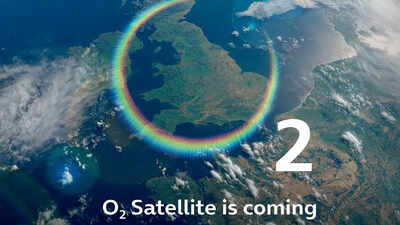ARTICLE AD BOX

Reliable mobile connectivity has long been a challenge for rural communities across the UK. Farms, remote villages, and isolated regions often experience weak signals and limited data access, making everyday communication and business operations difficult.
To tackle this persistent issue, Virgin Media O2 (VM O2) has partnered with Elon Musk’s Starlink to bring satellite-enabled mobile coverage to areas traditionally underserved by conventional networks. Leveraging Starlink’s constellation of over 650 satellites, the collaboration aims to provide consistent messaging and data services directly to compatible handsets. As reported by Reuters, the service is scheduled to launch in the first half of 2026, offering a practical solution to the UK’s rural connectivity gap and marking a significant step toward digital inclusion.
VM O2 to bring mobile service directly through Starlink satellites
VM O2, a joint venture between Telefonica and Liberty Global, will be the first UK operator to connect mobile handsets directly to Starlink’s satellite network. Starlink operates over 650 satellites in low Earth orbit, providing broad coverage and reduced latency compared to traditional satellite systems. By leveraging this constellation, VM O2 can bypass physical and geographical barriers, ensuring that rural users receive stable connections even in areas where building terrestrial infrastructure is challenging or cost-prohibitive.
Unlike traditional mobile networks that rely entirely on ground-based towers, satellite integration allows signals to travel directly from orbit to handsets. This method not only extends coverage but also introduces the possibility of mobile service in locations previously considered unreachable.
Global satellite partnerships expand mobile coverage in the UK and beyond
The UK is not alone in exploring satellite-mobile integration. Internationally, operators are increasingly partnering with satellite providers to improve connectivity.
In the United States, T-Mobile launched commercial satellite-based messaging services in July 2025, initially supporting texts before expanding to popular messaging apps like WhatsApp. Similarly, networks in Canada and Australia are entering agreements to provide direct-to-cell satellite services, signalling a growing global reliance on satellite technology to supplement traditional mobile networks.UK telecom rivals are also exploring similar solutions. Vodafone, for instance, revealed earlier this year that it is working with AST SpaceMobile to extend satellite connectivity to its European customers in 2026. Such moves reflect an industry-wide shift toward hybrid networks that combine terrestrial and satellite infrastructure, enabling operators to offer comprehensive coverage and reduce connectivity gaps in both urban and rural areas.
VM O2 chooses Starlink for reliable satellite mobile coverage across the rural UK
VM O2 CEO Lutz Schüler highlighted the strategic value of partnering with Starlink. He pointed out that Starlink’s advanced satellite constellation is unmatched in its ability to deliver reliable, consistent mobile coverage across vast areas. The network’s technological sophistication and global reach make it an ideal partner for VM O2’s vision of bridging the UK’s rural connectivity gap.Starlink has already been used by VM O2 to provide mobile backhaul connections to remote base stations, helping improve overall network performance in hard-to-reach locations.
This prior experience laid the foundation for the direct-to-handset service now planned for launch.
VM O2 partners with Starlink to close the digital divide in remote areas
Initially, VM O2 plans to offer messaging and basic data services via Starlink satellites. Details on pricing and broader service packages will be announced closer to the launch date. However, the long-term potential is significant: once satellite connectivity is fully integrated, rural users could access faster data, enhanced messaging, and potentially even app-based services that previously required terrestrial networks.This partnership also signals a broader trend in the UK telecommunications sector, as operators increasingly recognise the importance of hybrid solutions that combine traditional mobile infrastructure with satellite technology to ensure universal coverage.The collaboration between VM O2 and Starlink represents a crucial step in closing the digital divide in the UK. Rural communities, often overlooked by conventional mobile infrastructure, stand to gain from improved connectivity, enabling access to essential digital services, communication tools, and business opportunities. As satellite technology becomes more integrated into mobile networks, the UK could see a new era of seamless connectivity, where even the most remote locations enjoy reliable access to mobile services.Also Read | Mark Zuckerberg net worth drops $29B as Meta’s $70B AI spending shakes Bloomberg Billionaires Index and tech industry

 16 hours ago
4
16 hours ago
4








 English (US) ·
English (US) ·